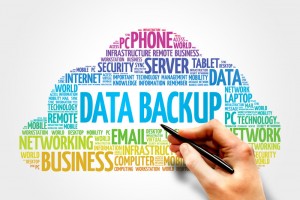 The growth of internet operations over the past couple of decades has been extremely beneficial for commercial interests in a number of ways. Not only can businesses now reach a much broader range of prospective customers, but they can offer the convenience of purchasing from the comfort of home thanks to online shopping carts.
The growth of internet operations over the past couple of decades has been extremely beneficial for commercial interests in a number of ways. Not only can businesses now reach a much broader range of prospective customers, but they can offer the convenience of purchasing from the comfort of home thanks to online shopping carts.
That’s just the benefits for retailers. Service providers can also offer ease of use to customers and clients thanks to speedy communiques and information sharing online. In both cases, however, there is one major challenge to consider: security.
When consumers provide businesses with private data, including names, contact information, credit card numbers, and even social security numbers, just for example, they expect this sensitive data to be protected. In addition, there are laws in place specifically aimed at protecting consumer privacy, such as those listed here on the Federal Trade Commission’s website.
In other words, companies must have systems in place to protect confidential information, not only for customers, but also employees, vendors, and anyone else they do business with. Unfortunately, data breaches can occur, even with the best security measures in place.
Taking steps like encrypting data can help to ensure that even stolen information is unusable. However, a business that suffers a data breach could end up dealing with files that have been locked, corrupted, damaged, destroyed, or otherwise rendered unusable.
Natural disasters can occur, as well, wiping out memory or even destroying physical systems. For these reasons, companies must prepare for data recovery with a solid strategy for backing up data. Here are a few best practices to set you on the right path.
Hardware and Software
Your best bet when it comes to data recovery is to avoid situations where you have to recover lost or stolen data. This is the worst-case scenario when it comes to data protection.
The best way to avoid data loss is to set up hardware and software that keeps your data safe. This means utilizing secure servers and setting up network security programs like a firewall, antivirus software, and encryption to protect data from breach situations.
Of course, it’s not always possible to stop breaches or natural disasters that could wipe out your system, so it’s also important to set up a system of backups to make data recovery (at least from your last save point) possible.
Planning for Recovery
When it comes to backing up data, there are three main considerations: frequency, capacity, and policies and procedures. You need to start by determining how often you want to back up your data.
Some companies do it weekly, some prefer daily, and others have multiple saves per day. The frequency of turnover of data could help you to figure out how often you should back up information.
You also need to think about the capacity required to save your company data, especially if you want to keep several save points on hand. Ideally, you should plan for flexible storage capacity with the option to grow along with your operation, either in-house or off-site (or both).
Finally, you need to implement policies and procedures for backup. With the right hardware and software in place, you may be able to automate the entire process. Still, your employees should know how and when to back up data, as well as how to keep it safe.
3-2-1 Backup Rule
The rule of thumb for backing up data is the 3-2-1 rule. This rule states that you need a minimum of three copies of data, that it must be stored in at least two different formats, and that one copy of your data should be stored off-site.
This level of redundancy might sound extreme, but suppose you have operational data stored on a network and backed up on hard drives. What if a tornado destroys your office, your servers, and all of your data?
If such a catastrophe should occur, you’ll certainly be glad you created a third copy of your company data and stored it off-site, making recovery possible.
Monitoring and Management
The final practice to observe when it comes to data backup is monitoring and management. When you hire services to monitor your systems and manage your data backups, you can increase security and your ability to avoid costly issues like data breaches that could lead to losses.


